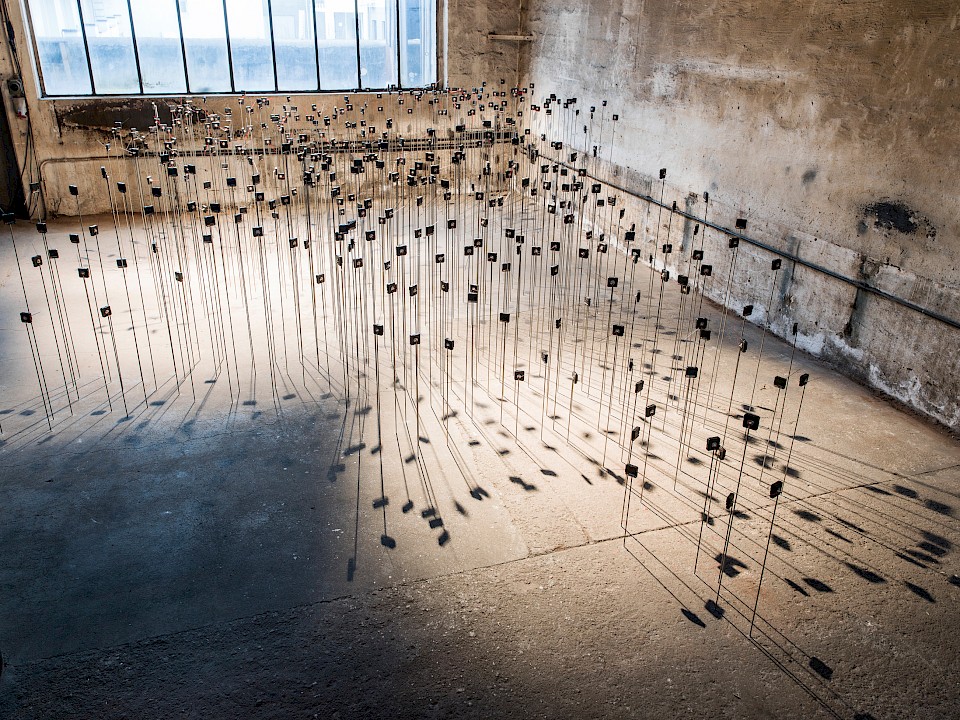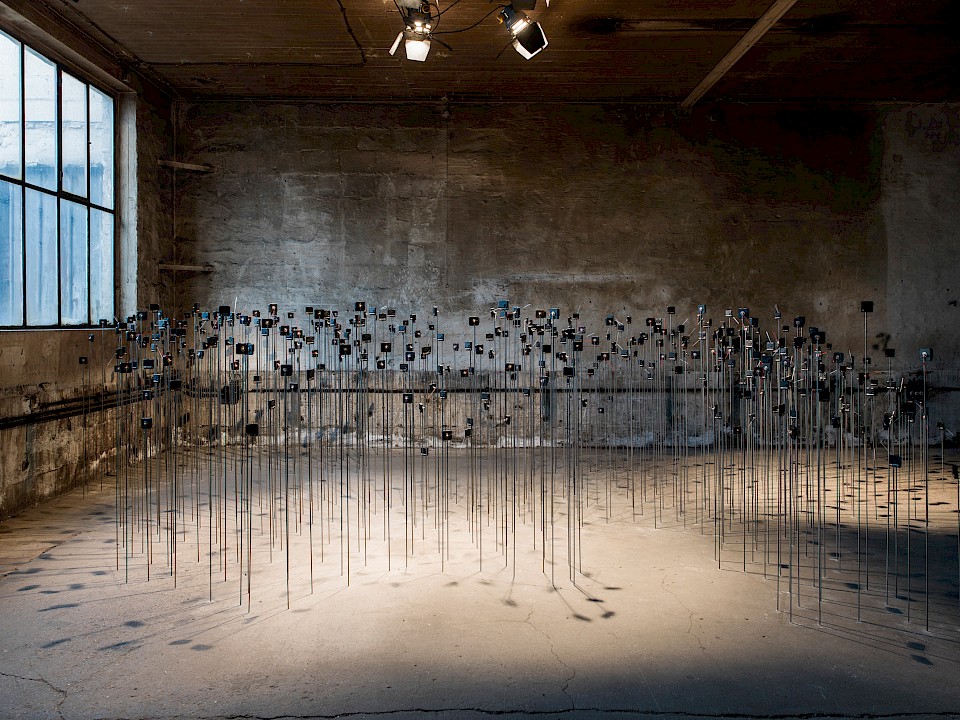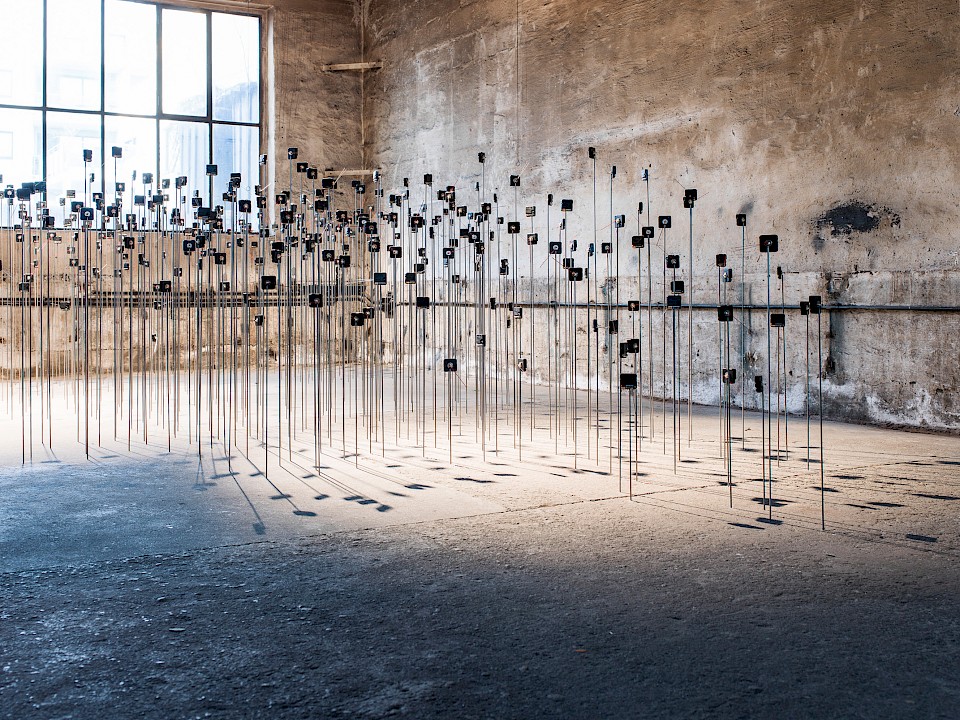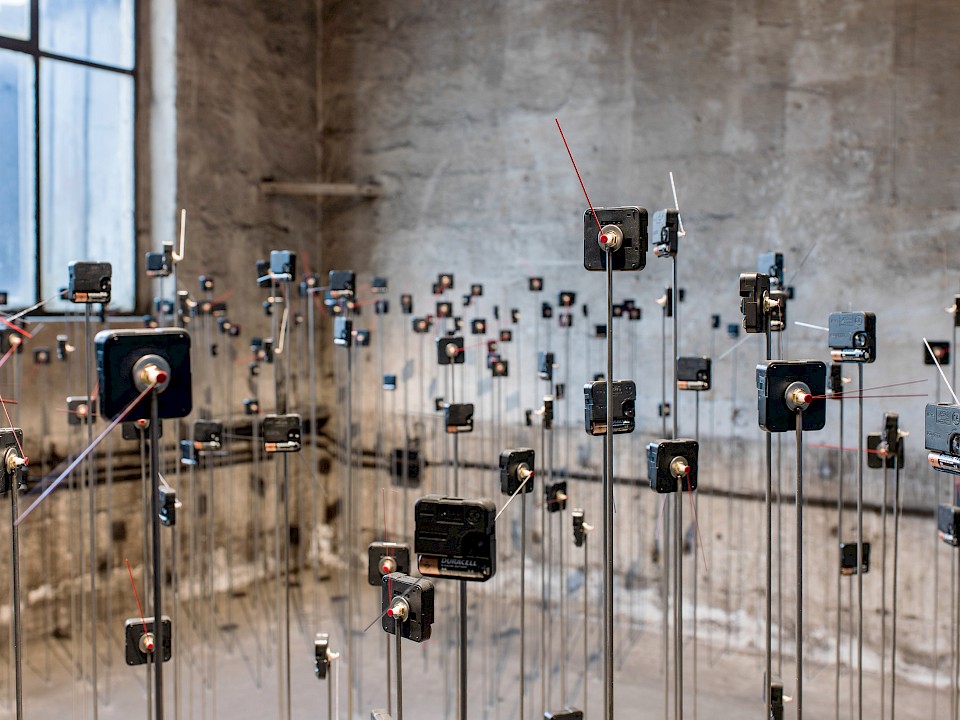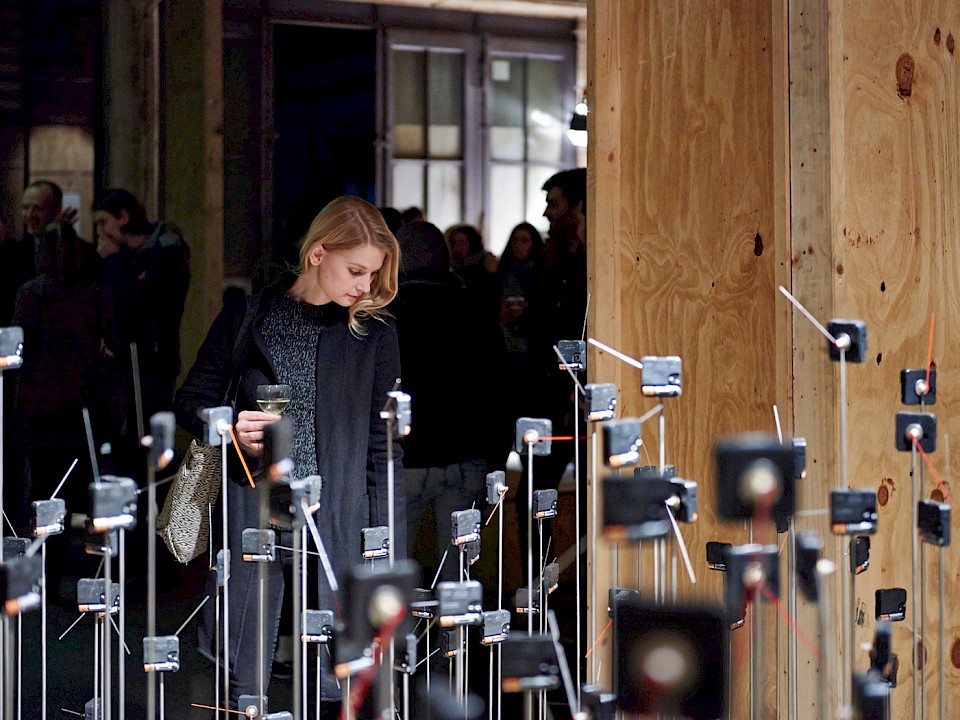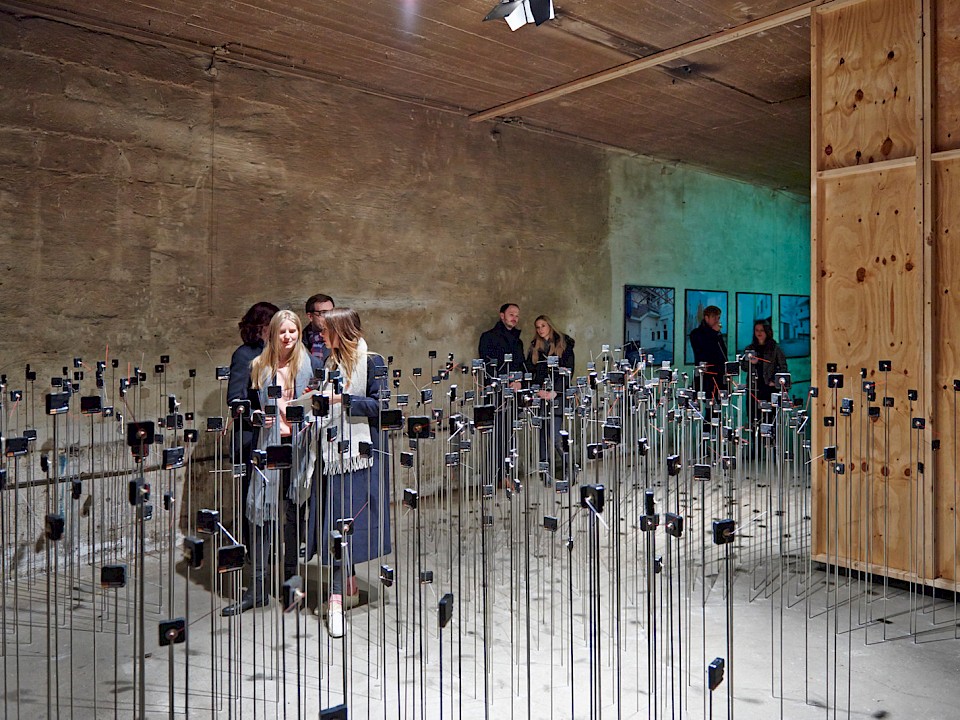inzwischen
Today—more than ever before—time seems to be the most valuable asset of people that live in the developed parts of the world. The fact that today we have the highest live expectancy in history does not seem to give people more time. This raises the question of how time is perceived and what influences this perception. How does the western, industrialized lifestyle impact our sense of time?
Since the day time was first exactly measured it was possible to see it not as something that just is but as something you have. The fact that we talk about »having time« or »time is money« hints that time is perceived to be something that can be possessed, controlled and traded. We spend time at work: we pay for our salary by giving up time to something.
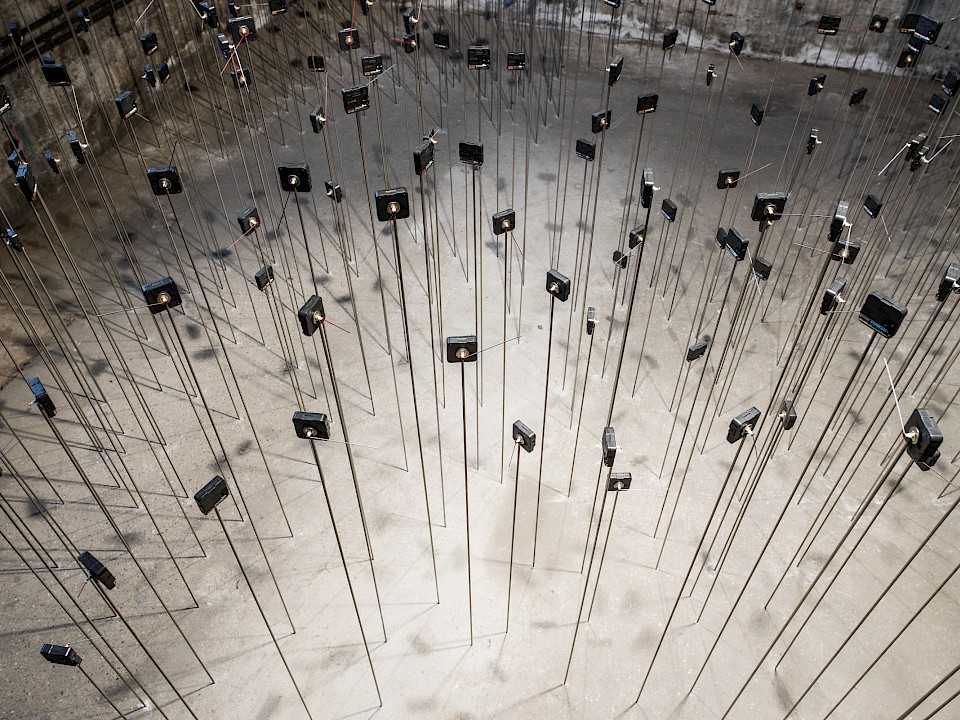
In a technological world where everything seems to be about attention it is hard not to feel like everything around us is trying to steal time from us. The interconnected world creates a distressing feeling of simultaneity. It gives the impression that whatever you might be doing you will be missing out on something else. It provides a breeding ground for anxiety, envy and vanity. By connecting everything and everybody technology seems to alienate people from themselves.
The installation allows the visitors to question and explore their own perception of time. The arrangement of regular quartz clock movements in space invites to experience time visually as well as acoustically. Their ticking creates a walkable soundscape. Through slightest differences in frequency caused by the unique nature of every quartz the rhythm created is changing and is perceived differently throughout the space. The red second hands make this rhythm visible, their twitching gives the installation the appearing of a huge and ever changing organism.
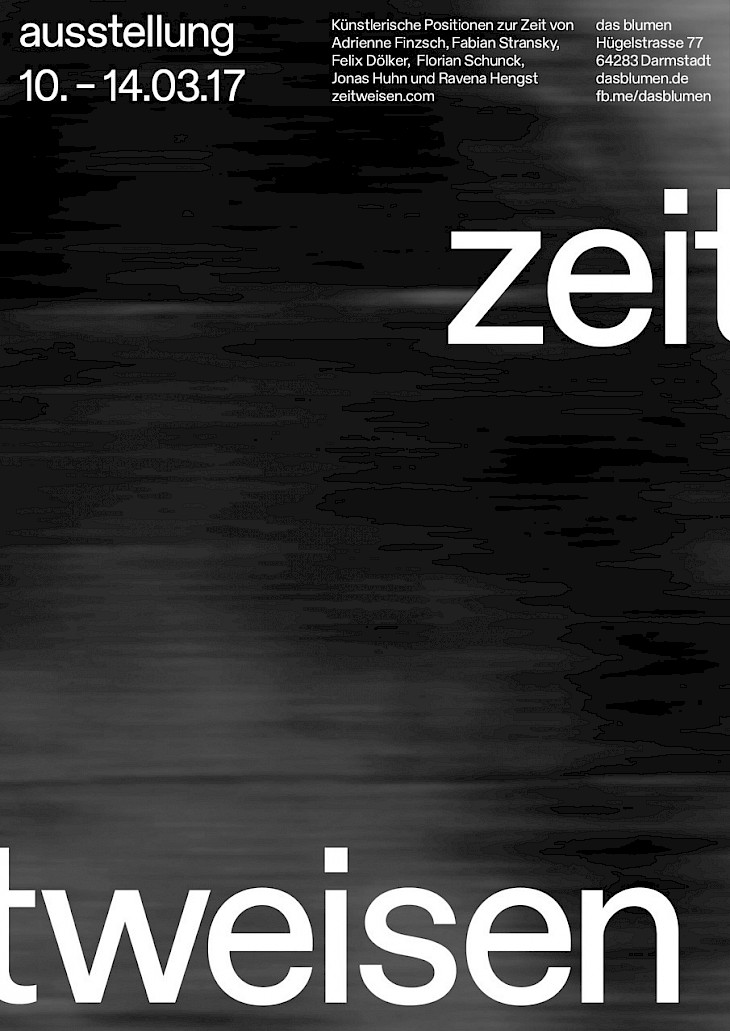
The work is part of the masters project in the M.A. course Leadership in the Creative Industries at the Media Faculty of the University of Applied Sciences in Darmstadt, Germany as well as the Cork Institute of Technology, Ireland. It was presented as part of the exhibition »zeitweisen«, which was shown at the Blumen in Darmstadt’s Hügelstraße 77 from March 10th to 14th 2017.
Photography: Felix Schöppner
